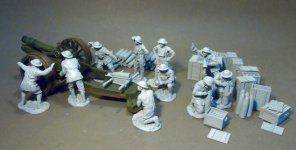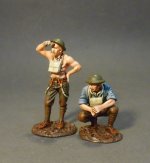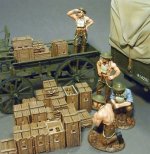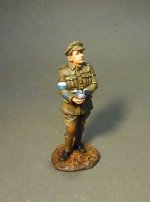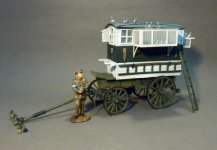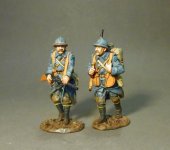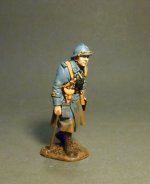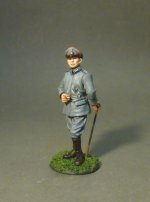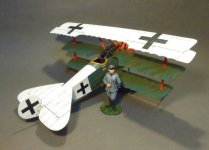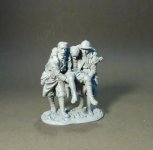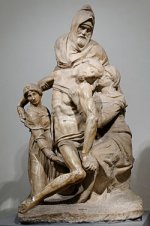THE GREAT WAR 1914-1918
This was the appearance of the Saint-Chamond Tank after its first upgrade. It was armed with the 75 Tir Rapide (TR) Model 12 Cannon. The vehicle featured four roof turrets, twoobservation turrets forward, one on either side, with one between them for venting the gunsmoke after the firing of the cannon. The fourth turret was at the rear on the left hand side, and was used by the driver whilst driving backwards. The turrets were in fact weak spots of the tank’s structure, and it was quite common that machine gun fire would shoot away the turrets. The observation turrets were therefore removed for the later version.
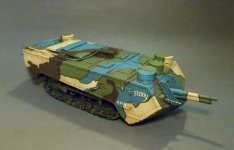
GWF-02
THE GREAT WAR,1914-1918
SAINT-CHAMOND TANK, EARLY VERSION, 1st Battery, AS 31 “TEDDY”
(1pc)
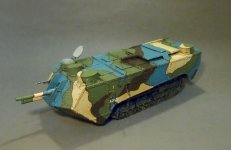
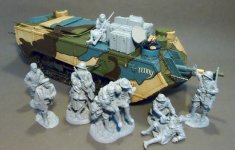
The next round of French Infantry are in production! These will include more casualties, and 2 German prisoners.
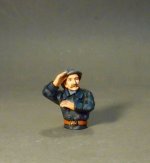
GWF-02A
THE GREAT WAR,1914-1918
SAINT-CHAMOND TANK, EARLY VERSION, TANK COMMANDER
(1pc)
** PLEASE NOTE, This figure can be used with both the GWF-01 Schneider tank, as well as the GWF-02**
More releases to follow.......................................................
This was the appearance of the Saint-Chamond Tank after its first upgrade. It was armed with the 75 Tir Rapide (TR) Model 12 Cannon. The vehicle featured four roof turrets, twoobservation turrets forward, one on either side, with one between them for venting the gunsmoke after the firing of the cannon. The fourth turret was at the rear on the left hand side, and was used by the driver whilst driving backwards. The turrets were in fact weak spots of the tank’s structure, and it was quite common that machine gun fire would shoot away the turrets. The observation turrets were therefore removed for the later version.

GWF-02
THE GREAT WAR,1914-1918
SAINT-CHAMOND TANK, EARLY VERSION, 1st Battery, AS 31 “TEDDY”
(1pc)


The next round of French Infantry are in production! These will include more casualties, and 2 German prisoners.

GWF-02A
THE GREAT WAR,1914-1918
SAINT-CHAMOND TANK, EARLY VERSION, TANK COMMANDER
(1pc)
** PLEASE NOTE, This figure can be used with both the GWF-01 Schneider tank, as well as the GWF-02**
More releases to follow.......................................................


